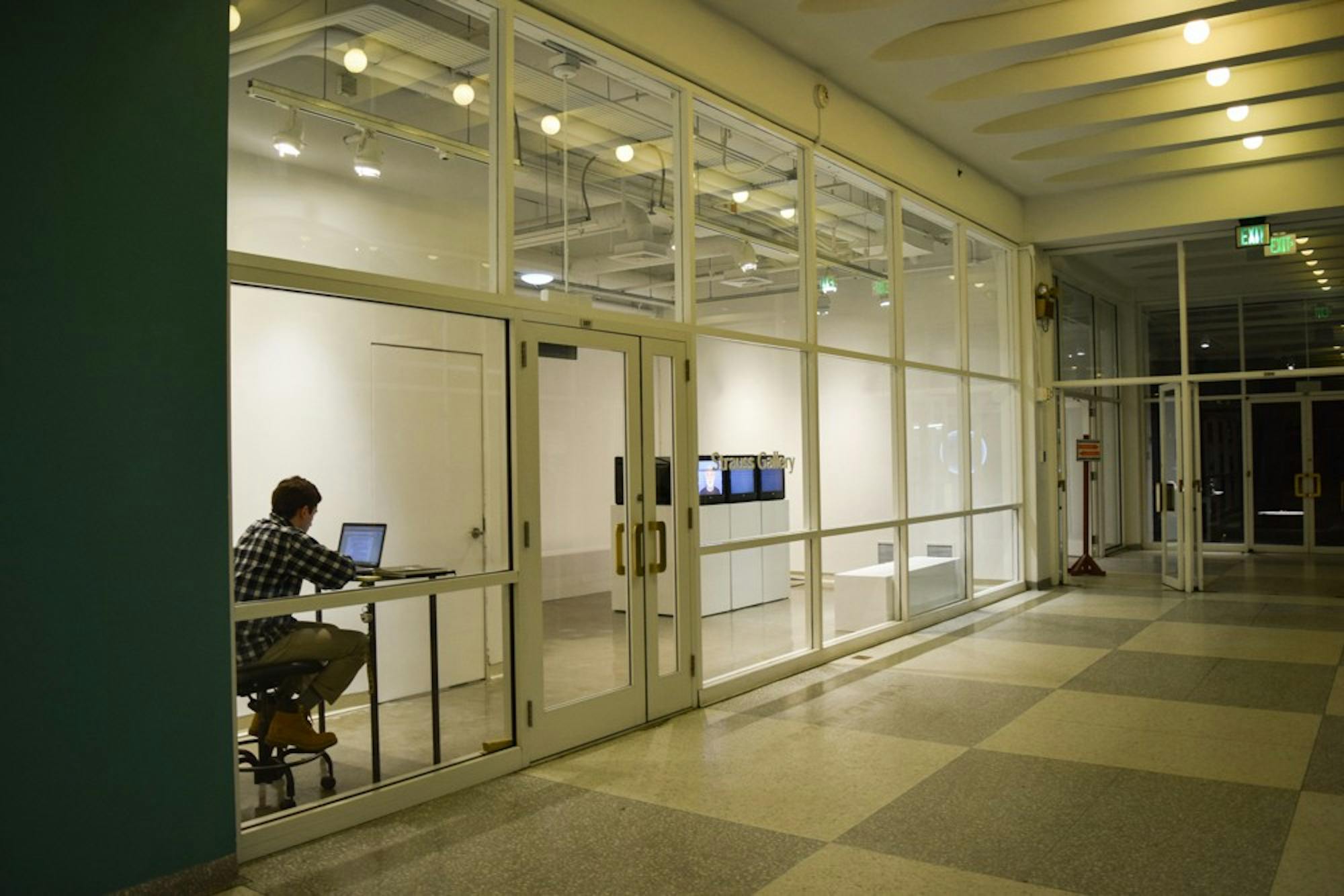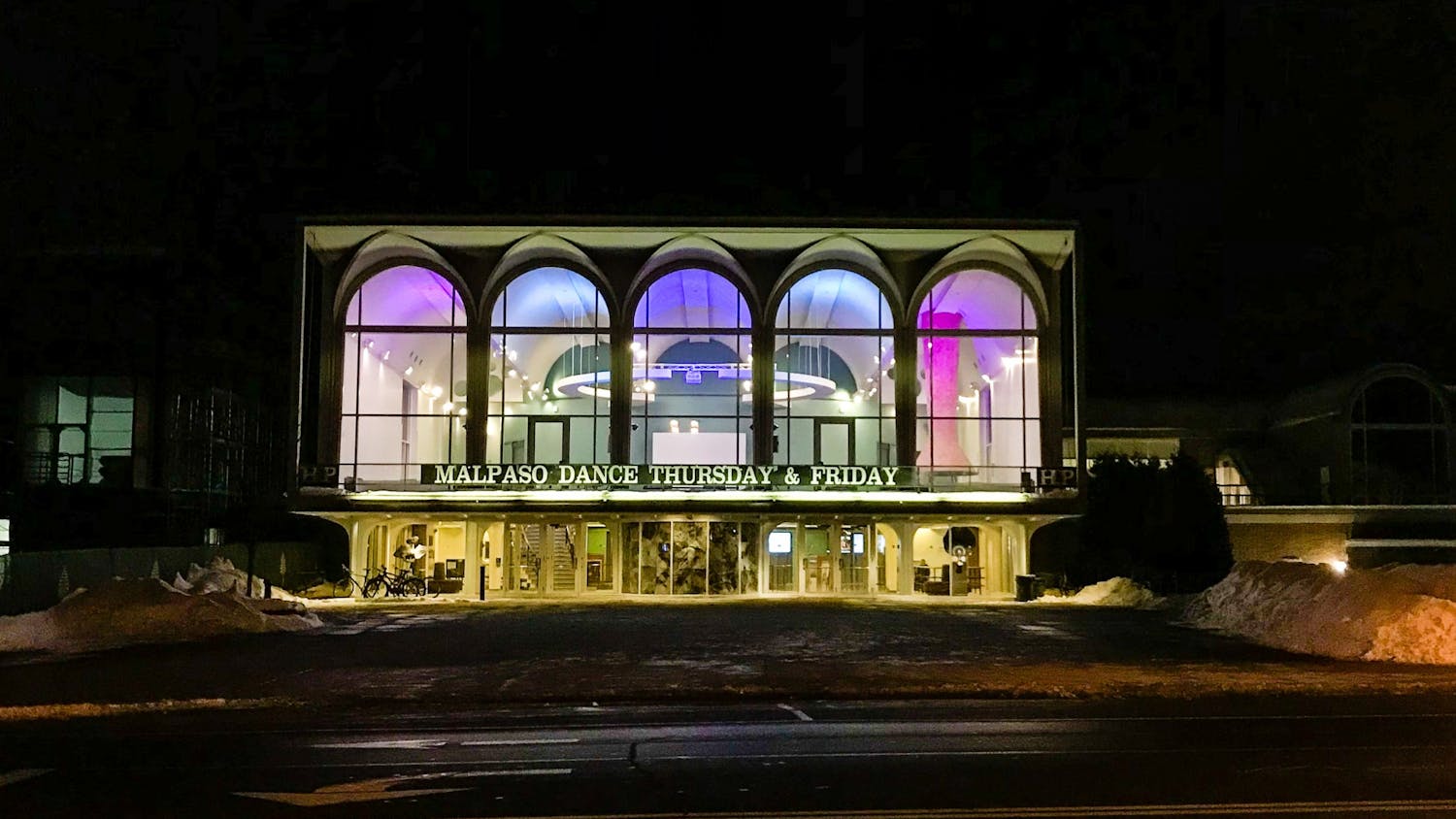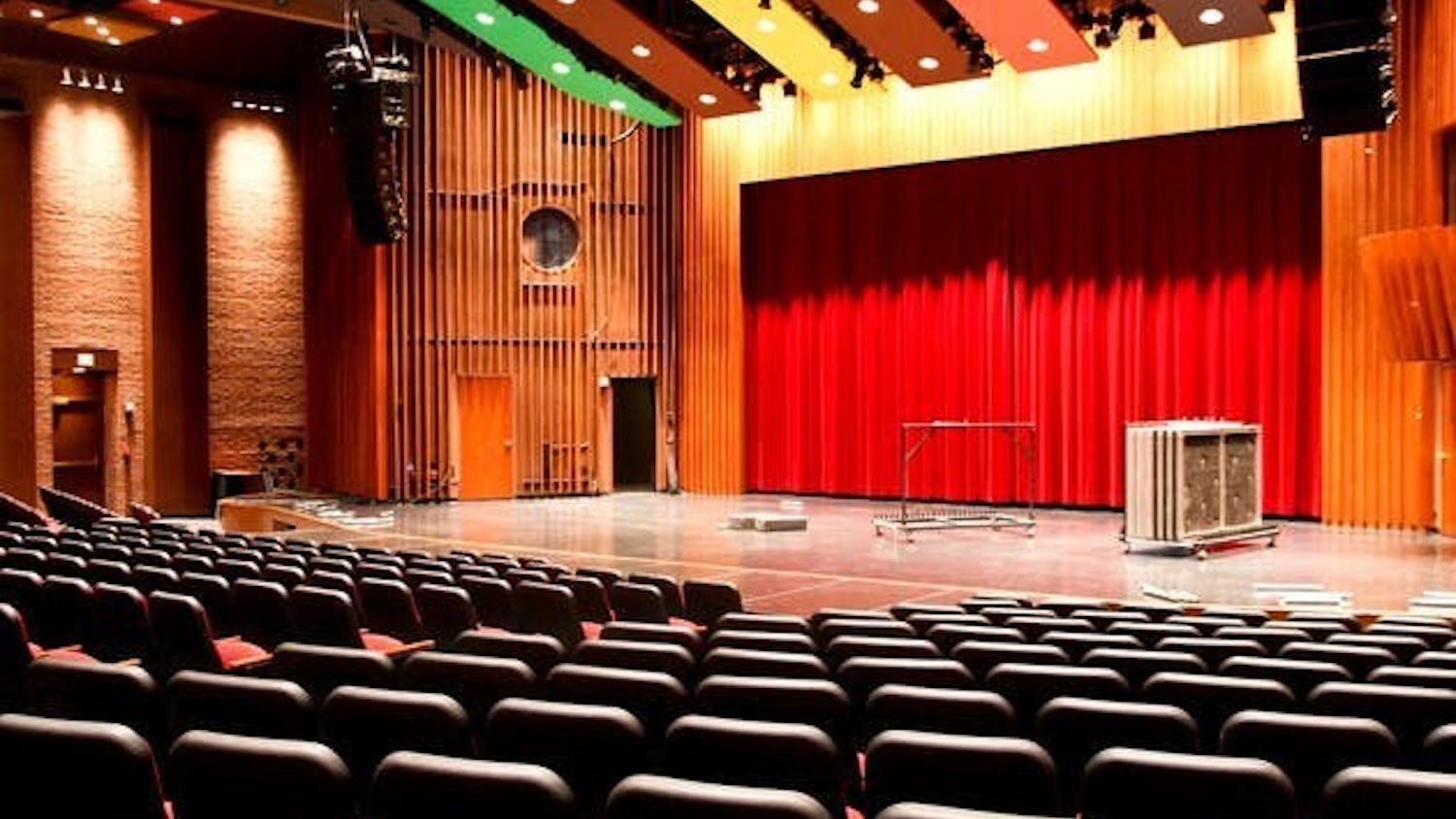With the Feb. 10 announcement of the College’s plans for a $75-million expansion and renovation of the Hopkins Center for the Arts, community members can look forward to enhanced rehearsal and performance areas, improved gathering places and an updated entryway.
The College first considered expanding the Hop “10 or 15 years ago,” with the goal of bringing all the arts disciplines under one roof, Hop director Mary Lou Aleskie said. To address the art scene — which Aleskie said was “outgrowing” the original Hop building — the College first constructed the Black Family Visual Arts Center in 2012 and then completed renovations on the Hood Museum of Art in 2019. Now that those projects have concluded, the College is making the Hop project a reality, Aleskie said.
The College currently plans to begin work on the building in late 2022, according to Aleskie, with the exact timeline to be ironed out in late fall. Dartmouth’s collaboration with Snøhetta, the Norwegian architectural firm that will oversee the expansion, is currently in the “very early stages,” she said. The COVID-19 pandemic has not impacted the timeline of the project.
Walter Cunningham, director of the Hop’s Contemporary Pop Ensembles, said that the College has narrowed its design plans to two options. Although he and other Hop directors have not been directly involved in planning so far, he said he believes their input has been considered. Cunningham participated in the initial roundtable of arts leaders that met during the early planning stages of the Hop’s renovation over a decade ago, and now that the project has resurfaced, he anticipates becoming involved in the planning process once again.
Cunningham said he is optimistic that the Hop project will emphasize the need for more rehearsal space. To cope with the current shortage, he has resorted to conducting rehearsals in his office, the building’s garage space, faculty lounge and Alumni Hall, the last of which he described as “acoustically dead.”
Cunningham explained that since there is no space permanently equipped for performance, he consistently runs into the “daunting” task of setting up sound systems in temporary spaces. That process can consume a full day, he said. As a result, he noted that “a lot of performance does not happen because of the requirements to make it happen.”
He said he hopes the project will establish a space that it is permanently equipped for recording.
Aleskie said that the expansion seeks to “maintain the integrated nature of the way the arts function and … offer it in a contemporary way that includes 21st century technologies and adaptability.”
She said that the project will work to bridge the “separation between audience and artists” through a more “hybrid experience.”
Environmental impact will play a role in the design process, Aleskie said, specifically noting technology such as digital ticketing and LED lighting. Collaborating with Snøhetta — a firm “committed to careful analysis of the environmental and social effects of each phase of a project,” according to its website — allows the College to create an expansion with impact in mind, Aleskie said.
The project has so far been received favorably by the Hop’s student community.
Noah Campbell ’21, both a student artist and Hop employee, said the College’s announcement has created “a lot of excitement” among students, as the Hop serves not only as a “hub” for the arts, but also a social space, study space and the home of the Hinman Mail Center.
Polly Chesnokova ’24, who plans to major in film, is also hopeful about the project’s impact.
“The Snøhetta renovation is a sign of the administration’s support of the arts on campus, and I’m so glad to see it in action,” she said. “Art is an inherently collaborative process, so having an accessible space to produce and experience it is crucial for both students and faculty.”
Cunningham added that he hopes the expansion and renovation will enhance accessibility and “remove the barrier to entry” that can inhibit student involvement in the arts.
Campbell noted that the current Hop design can feel “rigid,” which he said can be “discouraging to people who really just want to grab some guitars and sing or participate in any sort of artistic expression in a more casual setting.”
To Campbell, the uncertainty brought by COVID-19 has only reinforced the importance of the arts. The project, he said, seeks to “make the arts part of [the] new normal that we begin to cultivate.”




